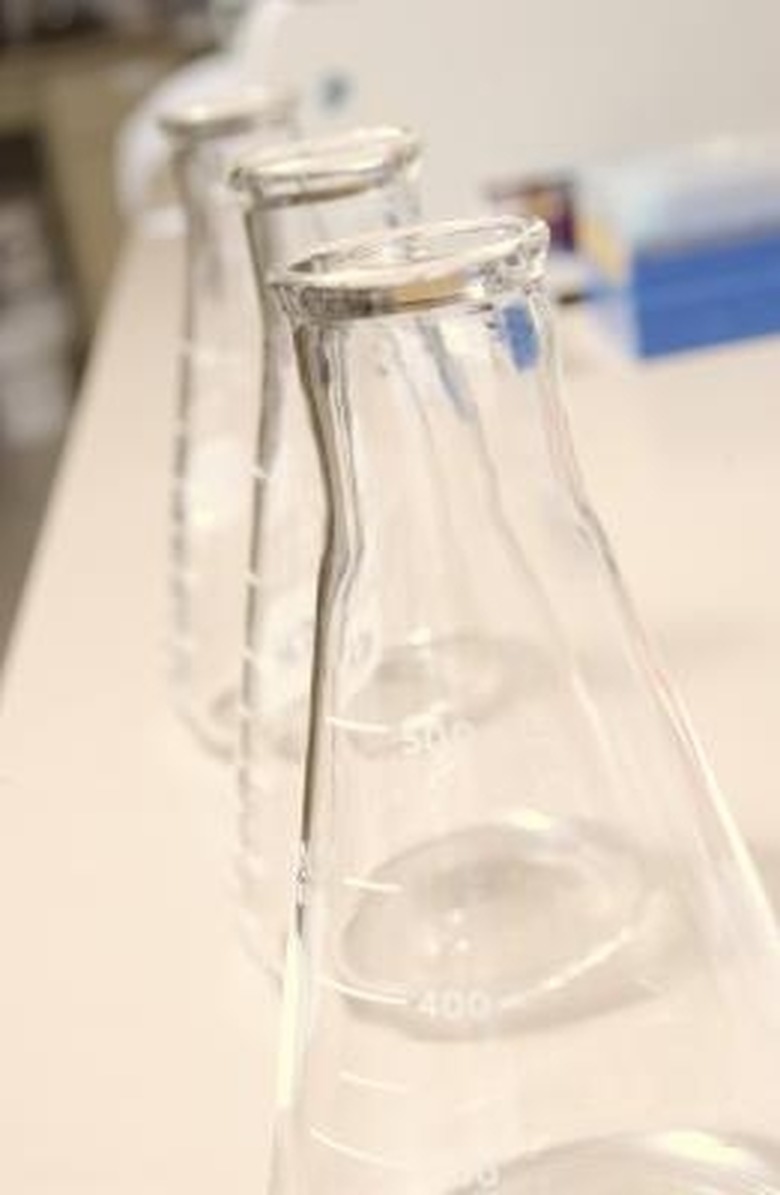How To Calculate The Mass Of Reaction In A Mixture
Mass of reaction is a measure of the masses (or weights) of materials involved in chemical reactions. Chemical reactions almost always occur in an excess of one or more reactants, and therefore a reaction can proceed only to a point where the "limiting reactant" is entirely converted to the reaction product(s). This can be seen in the balanced equation of a chemical reaction. If a problem in chemistry includes sufficient information on the reactant masses in a mixture or the masses of the reaction products, then the masses of materials that actually take part in the reaction can be calculated.
Step 1
Assume you have a mixture composed of 12 grams (g) of pure zinc (Zn) metal and 7.50 g of sulfur (S), and the mixture is heated to reaction temperature. Write the equation of the chemical reaction, as follows: Zn + S = ZnS.
Step 2
Convert the mass of Zn to moles of Z by dividing the molar mass of Zn into the mass of Zn, as follows: 12 g Zn x 1 mole Zn/65.38 g Zn = 0.184 moles Zn. Convert the mass of sulfur to moles of S, as follows: 7.5 g S x 1 mole S/32.06 g S = 0.234 moles S.
Step 3
Note from the chemical equation that 1 mole of Zn reacts with exactly 1 mole of S to produce exactly 1 mole of ZnS. Note that more S is present than required to completely convert the Zn to ZnS, and therefore Zn is the limiting reactant. The amount of ZnS produced depends on the amount of the limiting reactant, Zn, not on the amount of S.
Step 4
Subtract the moles of Zn in the mixture from the moles of S to find the number of excess moles of S present, as follows: 0.234 moles S – 0.184 moles Zn = 0.050 moles S. Multiply excess moles of S by the molar mass of S to find the mass of S that does not react, as follows; 0.05 x 32.06 = 1.60 g S. Subtract the excess mass of S from the mass of the mixture to find the mass of reaction, as follows: 12.00 + 7.5 – 1.60 = 17.9 g
Step 5
Determine the mass of the reaction product ZnS by multiplying the number of moles of ZnS produced by the molar mass of ZnS, as follows: 0.184 mole ZnS x 97.44 g ZnS/mole ZnS = 17.9 g ZnS. Note that the mass of the reaction product ZnS and the mass of reaction are the same.
Things Needed
- Pen
- Paper
- Calculator
TL;DR (Too Long; Didn't Read)
Molar mass is defined as the mass of one mole of an element or compound. A mole of a chemical substance is defined as the "Avogadro number" of atoms or molecules of the substance. The Avogadro number is a constant with value 6.022 x (10 raised to the power 23). The molar masses of substances vary in direct proportion with the masses of their atoms or molecules.
References
Cite This Article
MLA
Merry, Michael. "How To Calculate The Mass Of Reaction In A Mixture" sciencing.com, https://www.sciencing.com/calculate-mass-reaction-mixture-8620099/. 24 April 2017.
APA
Merry, Michael. (2017, April 24). How To Calculate The Mass Of Reaction In A Mixture. sciencing.com. Retrieved from https://www.sciencing.com/calculate-mass-reaction-mixture-8620099/
Chicago
Merry, Michael. How To Calculate The Mass Of Reaction In A Mixture last modified August 30, 2022. https://www.sciencing.com/calculate-mass-reaction-mixture-8620099/
